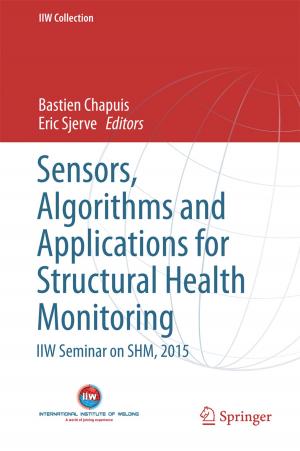Gas Accretion onto Galaxies
Nonfiction, Science & Nature, Science, Physics, Cosmology, Astrophysics & Space Science| Author: | ISBN: | 9783319525129 | |
| Publisher: | Springer International Publishing | Publication: | March 23, 2017 |
| Imprint: | Springer | Language: | English |
| Author: | |
| ISBN: | 9783319525129 |
| Publisher: | Springer International Publishing |
| Publication: | March 23, 2017 |
| Imprint: | Springer |
| Language: | English |
This edited volume presents the current state of gas accretion studies from both observational and theoretical perspectives, and charts our progress towards answering the fundamental yet elusive question of how galaxies get their gas. Understanding how galaxies form and evolve has been a central focus in astronomy for over a century. These studies have accelerated in the new millennium, driven by two key advances: the establishment of a firm concordance cosmological model that provides the backbone on which galaxies form and grow, and the recognition that galaxies grow not in isolation but within a “cosmic ecosystem” that includes the vast reservoir of gas filling intergalactic space. This latter aspect in which galaxies continually exchange matter with the intergalactic medium via inflows and outflows has been dubbed the “baryon cycle”. The topic of this book is directly related to the baryon cycle, in particular its least well constrained aspect, namely gas accretion.
Accretion is a rare area of astrophysics in which the basic theoretical predictions are established, but the observations have been as yet unable to verify the expectations. Accretion has long been seen around the Milky Way in so-called High Velocity Clouds, but detecting accretion even around nearby galaxies has proved challenging; its multi-phase nature requires sensitive observations across the electromagnetic spectrum for full characterization. A promising approach involves looking for kinematic signatures, but accretion signatures are often confused with internal motions within galaxies.
Accretion studies therefore touch a wide range of astrophysical processes, and hence a wide cross-section of the astronomical community. As observational facilities are finally able to access the wavelength ranges and depths at which accretion processes may be manifest, the time is right to survey these multiple lines of investigation and determine the state of the field in accretion studies of the baryon cycle.
This edited volume presents the current state of gas accretion studies from both observational and theoretical perspectives, and charts our progress towards answering the fundamental yet elusive question of how galaxies get their gas. Understanding how galaxies form and evolve has been a central focus in astronomy for over a century. These studies have accelerated in the new millennium, driven by two key advances: the establishment of a firm concordance cosmological model that provides the backbone on which galaxies form and grow, and the recognition that galaxies grow not in isolation but within a “cosmic ecosystem” that includes the vast reservoir of gas filling intergalactic space. This latter aspect in which galaxies continually exchange matter with the intergalactic medium via inflows and outflows has been dubbed the “baryon cycle”. The topic of this book is directly related to the baryon cycle, in particular its least well constrained aspect, namely gas accretion.
Accretion is a rare area of astrophysics in which the basic theoretical predictions are established, but the observations have been as yet unable to verify the expectations. Accretion has long been seen around the Milky Way in so-called High Velocity Clouds, but detecting accretion even around nearby galaxies has proved challenging; its multi-phase nature requires sensitive observations across the electromagnetic spectrum for full characterization. A promising approach involves looking for kinematic signatures, but accretion signatures are often confused with internal motions within galaxies.
Accretion studies therefore touch a wide range of astrophysical processes, and hence a wide cross-section of the astronomical community. As observational facilities are finally able to access the wavelength ranges and depths at which accretion processes may be manifest, the time is right to survey these multiple lines of investigation and determine the state of the field in accretion studies of the baryon cycle.















